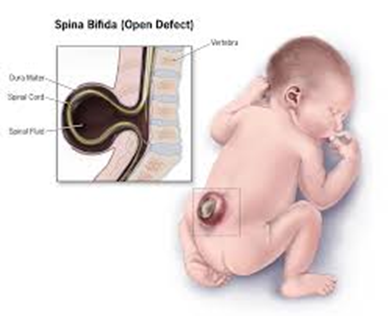A nurse is obtaining a 2-hr postprandial blood glucose from a client. Which of the following actions should the nurse take?
Select the lateral side of the finger for puncture.
Hold the finger above the heart prior to puncture.
Smear the blood onto the reagent strip.
Puncture the finger while still damp with antiseptic solution.
The Correct Answer is A
Explanation
Choice A Reason:
Selecting the lateral side of the finger for puncture is a correct. The lateral side of the finger is often recommended for blood glucose testing as it is less sensitive and typically produces less discomfort for the client compared to other areas of the finger.
Choice B Reason:
Holding the finger above the heart prior to puncture is not necessary for obtaining a blood glucose sample. Holding the finger above the heart could potentially affect the blood flow and result in an inaccurate reading.
Choice C Reason:
Smearing the blood onto the reagent strip is not correct. The blood should be applied directly to the designated area on the reagent strip without smearing to ensure accurate testing.
Choice D Reason:
Puncture the finger while still damp with antiseptic solution is not correct. Puncturing the finger while it is still damp with antiseptic solution can dilute the blood sample and interfere with accurate testing. The finger should be dried thoroughly before obtaining the blood sample.
Nursing Test Bank
Naxlex Comprehensive Predictor Exams
Related Questions
Correct Answer is B
Explanation
Explanation
Choice A Reason:
Cleaning the site with povidone-iodine may further irritate the exposed neural tissue and is not recommended. Povidone-iodine is a strong antiseptic that can be damaging to delicate tissues.
Choice B Reason:
Administering antibiotics helps prevent infection, which is a significant concern when there is exposure of cerebrospinal fluid due to the open neural tube defect. Infection can lead to meningitis or other serious complications if not promptly treated.
Choice C Reason:
"Prepare for surgical closure after 72 hr," may also be part of the overall plan of care, but immediate administration of antibiotics takes precedence to reduce the risk of infection while the newborn awaits surgical intervention. However, the exact timing of surgical closure may vary depending on the specific clinical circumstances and recommendations from the healthcare provider

Choice D Reason:
Monitoring the rectal temperature is important for assessing the newborn's overall well-being, but it is not the most immediate priority in this situation. The focus should be on preventing infection and protecting the exposed neural tissue.
Correct Answer is C
Explanation
Explanation
Choice A Reason:
"Consume foods served at cool temperatures." This recommendation is appropriate. While consuming foods served at cooler temperatures may be more tolerable for some pregnant women experiencing nausea, it is not a universal recommendation. Preferences for food temperature can vary among individuals, and some may find warm or room temperature foods more soothing.
Choice B Reason:
Brushing teeth after each meal is generally recommended for good oral hygiene but may exacerbate nausea in some pregnant women, especially if they have a heightened gag reflex. Instead, it might be more appropriate to suggest gentle oral care measures, such as rinsing the mouth with water or using a mild mouthwash, to help alleviate the sensation of nausea.
Choice C Reason:
"Drink plenty of water when feeling nauseated." This is correct. Nausea and vomiting are common symptoms experienced by many pregnant women, especially during the first trimester. It is often referred to as "morning sickness" although it can occur at any time of the day. Staying hydrated is essential to help manage these symptoms. Therefore, recommending the client to drink plenty of water when feeling nauseated is important to prevent dehydration and may help alleviate symptoms.
Choice D Reason:
Eating three large meals per day may not be helpful for managing nausea and vomiting in early pregnancy. Instead, it is often recommended for pregnant women experiencing morning sickness to eat small, frequent meals throughout the day to help prevent an empty stomach, which can worsen symptoms.
Whether you are a student looking to ace your exams or a practicing nurse seeking to enhance your expertise , our nursing education contents will empower you with the confidence and competence to make a difference in the lives of patients and become a respected leader in the healthcare field.
Visit Naxlex, invest in your future and unlock endless possibilities with our unparalleled nursing education contents today
Report Wrong Answer on the Current Question
Do you disagree with the answer? If yes, what is your expected answer? Explain.
Kindly be descriptive with the issue you are facing.
